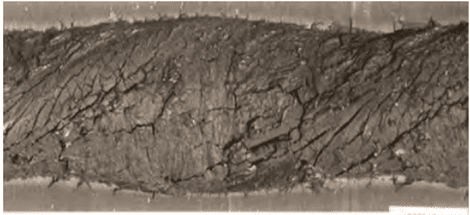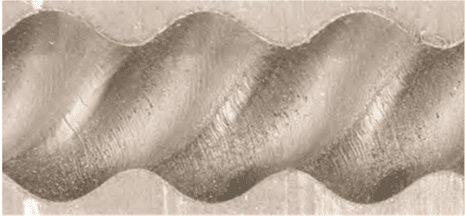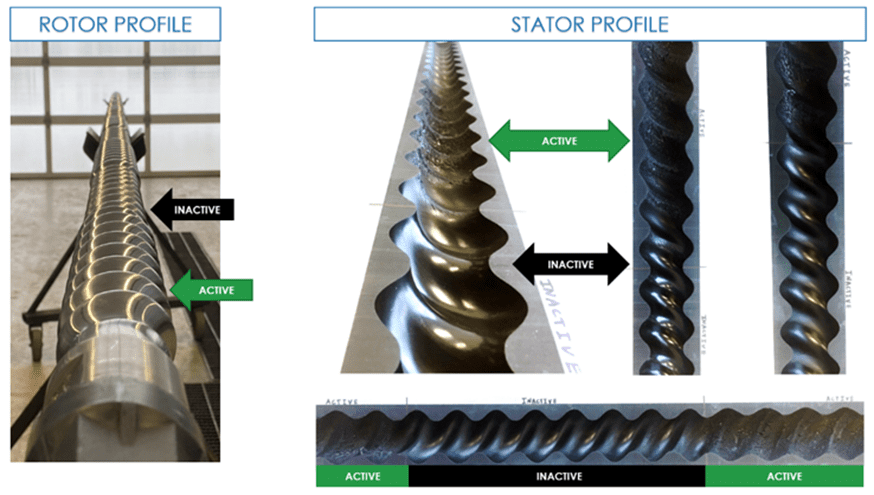
Reducing Pump Failures with PivotAL PC Pump
Project Information
| Client Name: | Confidential |
| Location: | Lindbergh, Alberta, Canada |
| Field Application: | Crude Bitumen |
| Initial Install Date: | March 2022 |
| LS Products and services: | PivotAL Progressing Cavity Pump |
Case Summary
The presence of viscous oil with abrasives and sand particles poses a significant challenge for artificial lift systems. The high viscosity of the raw fluid leads to poor inflow from the reservoir to the wellbore, resulting in slow pump intake rates. In progressive cavity pump (PCP) applications, it is crucial to ensure proper filling of the initial intake cavity to prevent stator elastomer burning, hardening, and early pump failures. This challenge can be addressed by selecting a pump with a low geometry index (such as the CHOPS style) with a relatively flat intake cavity and soft elastomer, as well as by slowing down the operational speed. However, for particularly challenging applications, modifying these variables may not be enough to prevent pump failures due to elastomer damage.


To address these challenges, Lifting Solutions has developed the PivotAL PC Pump, which features an extended stator with a rotor consisting of active and inactive sections. When pump efficiency starts to severely decline, a 12″ rod lift operation is performed to move the active sections of the rotor to previously unused sections of the stator. This technology allows the PC Pump to remain downhole and prevents premature pump failures and tubing workovers.
BACKGROUND – RECURRING CONVENTIONAL PCP FAILURES
The wells in this field are faced with comparable issues caused by the presence of slow-moving, viscous fluids with high abrasive content that lead to elastomer damage. These factors have led to a frequent occurrence of conventional PCP failures. In the case of this specific well, within a timeframe of 6 months, four pumps failed due to worn or burnt elastomer damage. Table 1 presents the workover history of this application.
| Event | Pump Model | Reason for Workover | Run Days | Notes |
|---|---|---|---|---|
| New Pump | 8-1800 | Worn Pump | ~ 276 | Workover cost of $21,600 |
| New Pump | 8-1800 | Worn Pump | ~ 289 | Workover cost of $18,700 |
| New Pump | 15K1400 | Burnt Pump | ~ 33 | Workover cost of $27,100 |
| New Pump | 10-1800 | Burnt Pump | 55 | Workover cost of $19,000 |
| New Pump | 10-1800 | Burnt Pump | 22 | Workover cost of $21,700 |
client challenge
Pump failures necessitate a servicing rig to workover the well and extract the tubing string, incurring costs ranging from $19,000 to $27,000. With a high frequency of workovers, wells can swiftly become uneconomical, resulting in the well being taken off production, thereby eliminating revenue. Improving fluid inflow viscosity using chemical treatments can enhance pump performance, but such methods can also be considerably expensive. Given the limited options for reducing operational costs, Lifting Solutions was assigned the responsibility of extending downhole pump performance while preserving efficiency and minimizing costly workovers.
the ls solution
After undertaking extensive research and development efforts, Lifting Solutions has designed an extended stator with a custom-milled rotor featuring active and inactive sections every 12 inches as shown in Figure 3, referred to as the PivotAL PC Pump. This PCP enables extended run times by operating only half of the extended stator until the volumetric efficiency drops low enough to move the rotor another 12 inches to the inactive section. This technology enhances downhole run times, reduces the occurrence of expensive workovers, and maintains production rates and efficiencies at acceptable levels. Table 2 serves as a continuation of the previous table and presents the runtime data of the PivotAL PC Pump.

| Event | Pump Model | Reason for Workover | Run Days | Run Days |
|---|---|---|---|---|
| New Pump | LS-PV 15-1200 PivotAL | N/A | 540 | Position 1 ran 176 days. Position 2 ran 364 days. |
Maintaining a high volumetric pump efficiency is critical to the production of produced fluid as well as the longevity of the PCP. Before installation, the pump must be appropriately sized with a baseline efficiency that is adjusted for expected downhole elastomer swell. An optimal downhole volumetric efficiency of 80-90% is aimed for when sizing the pump at the surface and is targeted to be maintained for as long as possible. In conventional PCP applications, a drop in efficiency below 40% is typically due to elastomer damage, requiring pump replacement. However, with the PivotAL PC Pump, when the volumetric efficiency in the first stage drops to approximately 50%, a 12″ lift with a flushby can be conducted to restore the target efficiency of 80-90%. Once in stage 2, the PivotAL PC Pump can be operated until failure. Figure 4 illustrates the relationship between pump efficiencies and replacements.

cONCLUSION
Through in-depth consultations with our clients, the Lifting Solutions engineering, and technical team have devised an effective solution to address early PCP failures attributable to elastomer wear/damage. With the development of the PivotAL PC Pump, it can remain downhole for a longer duration than conventional PCPs. This innovation is best suited for applications involving wells with relatively lower production rates that experience poor runtimes due to elastomer damage.
In this specific well, the client had been experiencing pump failures on average every 135 days. The PivotAL PC Pump installation has resulted in a fourfold improvement in runtime in comparison to the historical runtime average. This increase in runtime enhances the economic feasibility of the well instead of shutting it in due to unfavorable economics.
Let’s solve your lift challenges.
Reach out and Experience Performance with Lifting Solutions.